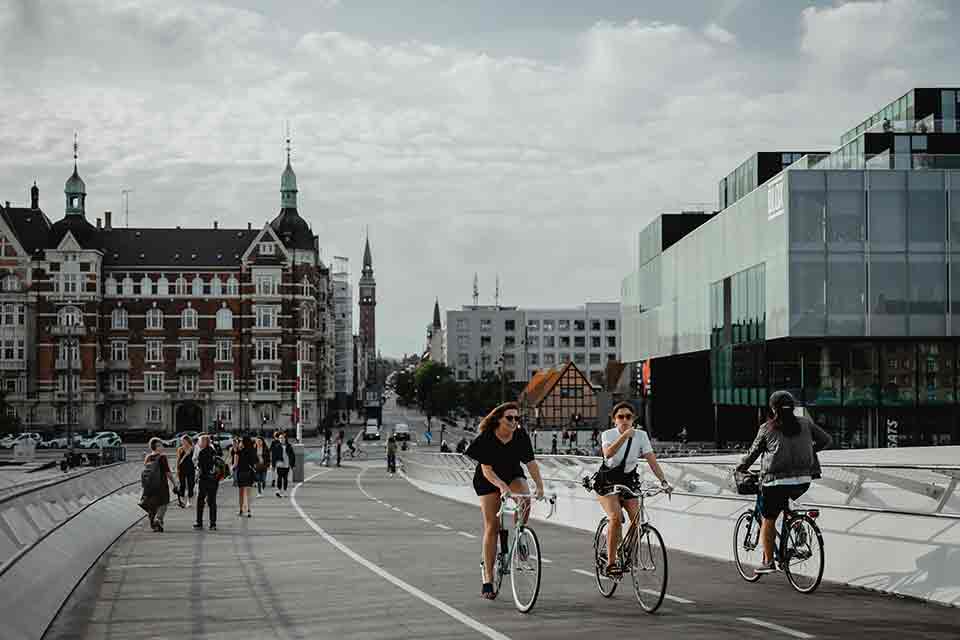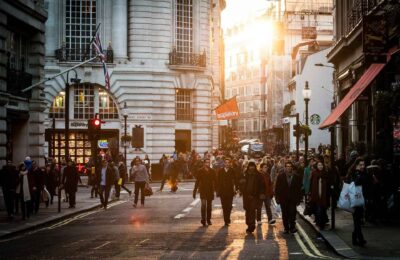Urban design is crucial in creating liveable, functional, and sustainable cities. It involves the planning and design of the built environment, including buildings, streets, public spaces, and transportation systems.
Effective urban design can help to create vibrant communities, reduce congestion and pollution, and promote social, economic, and environmental sustainability.
1. Accessible Public Spaces
Designing public spaces that are easily accessible is an essential principle of successful urban design. Public areas such as parks, plazas, and city squares provide opportunities for social interaction, physical activity, and relaxation. It should accommodate people of all ages, abilities, and interests. Well-designed public spaces create a functional and lively city.
Barcelona, Spain, has well-accessible public spaces for its residents and visitors through the “superblock” concept. The city is known for its iconic architecture, public art, and a network of pedestrian streets and public spaces promoting social interaction.

2. Walkability
Walkability and pedestrian-oriented streets are necessary for creating sustainable cities. Cities with increased walkability are more liveable, sustainable, and healthy. Walkable cities have pedestrian-friendly streets, sidewalks, intersections, and safe and accessible pedestrian crossings. A well-designed city encourages walking as a primary mode of transportation. Thereby reducing congestion and pollution and promoting physical activity.
New York City is one of the most walkable cities in the world. 57% of New York’s residents do not own a car.

3. Human Scale
Human scale refers to the size, proportion, and spatial relationship of buildings and public spaces to human beings. Urban design should create comfortable, inviting, and functional for people of all ages and abilities. Human-scale design should also ensure that buildings and spaces are proportionate to the surrounding environment, creating a sense of place and identity.
Jan Gehl is a Danish architect who advocates human-scale urban design for successful city planning. In 1962, the architect successfully transformed Copenhagen’s main boulevard Strøget into a pedestrian walkway against many criticisms. However, the street increased its pedestrian population to over 35% in its first year and about seven times by the year 2005. Moreover, Copenhagen is known for its bike-friendly infrastructure, pedestrian-friendly streets, and high-quality public spaces. This makes Copenhagen one of the best cities in human-scale urban design.

4. Mixed-use Development
Mixed-use development is essential for successful urban design. Mixed-use developments combine different types of land uses, such as residential, commercial, and office spaces, within the same area. The areas create a more diverse and vibrant community and reduce the need for long commutes, which can contribute to congestion and pollution.
Vancouver, Canada, is known for its high-density, mixed-use developments. In downtown Vancouver, the Yaletown neighborhood was transformed from a former industrial area into a mixed-use community that integrates high-rise towers, retail shops, offices, restaurants, and parks. This approach has successfully created vibrant, walkable neighborhoods offering residents easy access to all amenities.

5. Sustainability
Sustainability is a critical principle of successful urban design, which addresses today’s climate change issues. Sustainable design focuses on reducing the built environment’s impact on the natural environment and promoting social and economic sustainability. Sustainable urban design should include energy-efficient buildings, green roofs, rainwater harvesting systems, and public transportation systems that reduce emissions.
Singapore is one of the best examples of sustainable city development. The government helped promote sustainability through its policies, regulations, and incentives. They emphasize the efficient use of resources, recycling, and waste reduction. Moreover, the city invested in creating green spaces and preserving biodiversity through vertical gardens, parks, natural reserves, and green corridors. By 2030, Singapore plans to use clean energy for all its vehicles.

6. Transportation
Efficient transportation systems reduce congestion, limit pollution, and make moving around the city easier. An effective transportation system should include a mix of public transportation, pedestrian and bicycle infrastructure, roads, and highways.
According to the Sustainable Mobility Index, Helsinki, the capital city of Finland, ranks highest for having the most sustainable transport system in Europe. 77% of people walk or use public transportation on a weekday. Moreover, the city has several incentives to encourage using sustainable modes of transport.

7. Community Engagement
Community engagement is a crucial principle of successful urban design. It involves involving the community in the planning and design process and ensuring their voices are heard. Effective community engagement can lead to better outcomes, more buy-in, and greater acceptance of urban design proposals.
Overall, successful urban design involves a range of principles, including walkability, human scale, mixed-use development, sustainability, accessible public spaces, transportation, and community engagement. Urban designers, architects, and planners should consider these principles when designing the built environment to create livable, functional, and sustainable cities. By incorporating these principles, we can create cities that are beautiful and functional and contribute to their residents’ health, well-being, and quality of life.

